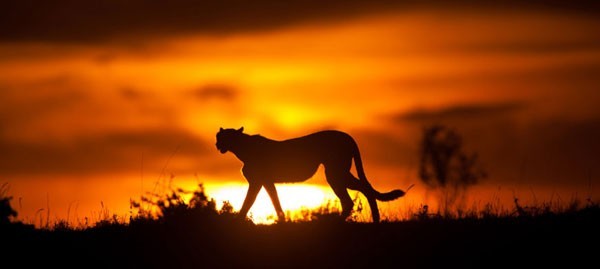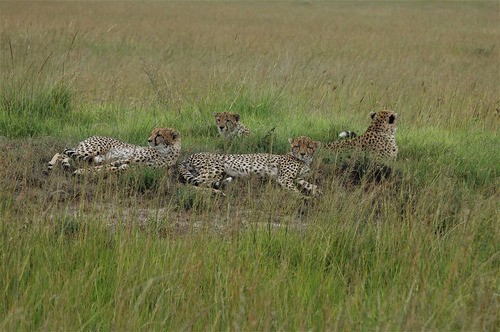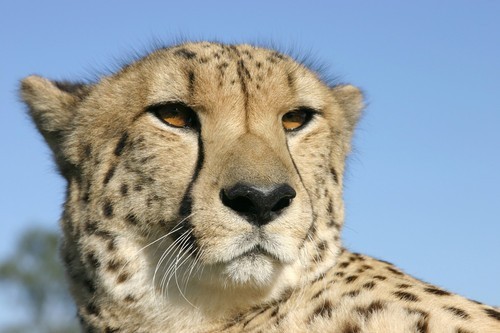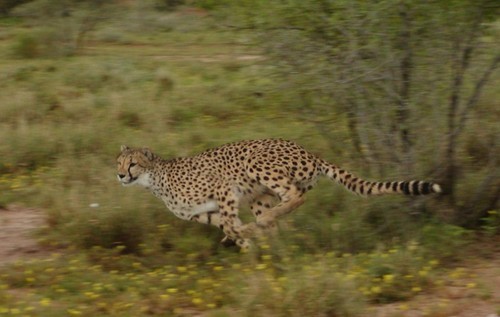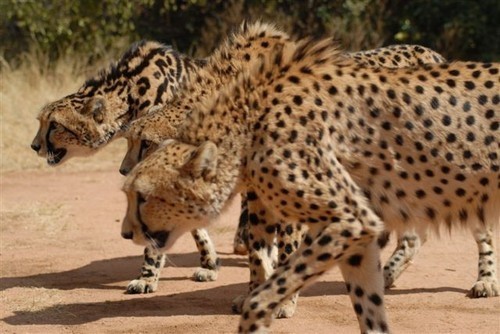Namibia is home to 3 000 of the total 10 000 cheetahs in existence in the wild today. These cheetahs make up the biggest population of wild cheetahs in the world, assigning the country a hefty responsibility to protect and safeguard this precious, endangered cat. Due to their ‘vulnerable’ status on IUCN (International Union for the Conservation of Nature), it is only legal to remove cheetahs if they pose a threat to livestock or human life, which is precisely where the problem lies in central Namibia. 95% of the cheetahs in this country survive on commercial land, where they are safer from other predatory threats, such as leopards and lions. This, combined with Namibia’s drastic droughts, has pressurised cheetah habitats and the availability of prey, causing life-threatening conflict with farm-owners. Life threatening for the cheetahs, not the farmers, as cheetahs do not present any threat to human life, as lions do in the north-western region of the country.
The CCF (Cheetah Conservation Fund) was founded in 1990 to combat the rapid declination of this specialised African cat. Dr Laurie Marker, co-founder, picked up her American life and moved to Namibian soil after decades of studying cheetahs and acknowledging their dire future should she not make a concerted effort to protect them from being needlessly killed in the wild. It is the goal of the CCF to ensure the harmonious existence of cheetahs and humans through the development of integrated programmes that will ultimately save the species from extinction.
Upon visiting the CCF in the wonderful Waterberg Plateau of Namibia, I was taken on a tour of the facilities by my dreadlocked guide, who informatively showed us around the site, explaining how the foundation works for cheetah survival. I was thrilled at the sight of puppies, of course, but understanding how these clumsy, licking little ones have changed the state of cheetah-farmer conflict was really what warmed my heart. Charcoal-faced Anatolian Shepherds, and more recently, Kangal dogs, are bred on the property and raised amongst a herd of goats, beginning their lives as livestock protectors from puppy-hood. This particular breed of dog has boasted spectacular instincts for over 6000 years and is used for guarding herds from predating wolves in their Turkish homeland. Since 1994, these shepherd dogs have been bred, trained and monitored as livestock guards for Namibian farmers, successfully reducing the cheetah mortality rate in areas where they have been employed.
Over 400 trained pups have been placed with Namibian farmers to date, as an extension of a guard dog effort already in place with many farmers trying to protect their livestock from cheetahs. The Turkish breeds are specifically adapted to the extreme temperatures in Namibia and they are natural protectors with an instinctual fight-or-flight reflex, making them cookie-cutter perfect for their roles as defenders. The CCF runs a charmingly successful goat creamery with milk-providers that have a dual role as puppy-trainers. The dogs are born and raised among the goats, as opposed to humans, meaning that they relate to the herd as their family whom they must protect. When the dogs are distributed to specifically selected farm-owners, they instinctively protect the livestock from threats, which far too often come in the form of our endangered spotted African cats. Barking an alert, reigning in the herd and chasing the cheetah away, the benefit provided by these shepherd dogs is multi-faceted.
There has been a 90% reduction in the number of cheetahs being shot, snared or poisoned by farmers retaliating or preventing attacks on their livestock where the dogs are present. The use of the Turkish breed dogs has been hugely comforting and vastly beneficial for the most endangered big cat in Africa.
This thriving foundation has pioneered a number of initiatives aimed at saving the cheetah, whilst uplifting and educating the Namibian community who should benefit from the presence of these exceptional cats. Training is provided by the CCF in local communities as part of the Future Farmers of Namibia programme, broadening farmers’ understanding of wildlife and livestock management and conservation. University and school groups from all over the world are encouraged to visit the ranch and enjoy guided tours, informative talks and observing the action-packed feeding time, which offers a closer look at these remarkable animals.
The CCF was a plethora of discovery and my visit lasted all day long, as I couldn’t quite get enough of the varietal experience. Visitors are encouraged to embark on safari tours to see the cheetahs that are being rehabilitated in more remote enclosures in the reserve, so as to diminish the aspect of unnatural human interaction. For an uninterrupted experience at the reserve, overnight at Babson House; the 1940s inspired luxury accommodation, neighbouring the prowling ground of CCF’s beloved cheetahs. Sit at the quaint Cheetah Café and indulge in light lunches, tea-time treats and cheese platters offering the freshest of produce from the onsite Dancing Goat Creamery. Amble around the property be consumed by the wonderfully assembled cheetah museum, where information, demonstrations, DVDs, sculptures and skeletons offer a fascinating look into the history and future of this big cat.

